What does gBICS mean? The global Breastfeeding Initiative for Child Survival (gBICS)
The gBICS is a worldwide civil society-driven initiative aiming to accelerate progress in attaining the health-related Millennium Development Goals (MDGs) by 2015, especially Goal 4, reduction of child mortality,
by scaling up early, exclusive and continued breastfeeding.
The gBICS can be portrayed as the process of building a house that sets in motion the realisation of the
rights of children to the highest attainable standard of health by protecting, promoting and supporting breastfeeding[1]. The idea is to represent a home where breastfeeding is successfully and naturally practiced.
The builders of the house are civil society groups (including NGOs, health professional associations, public interest groups, trade unions and the media) working together with their governments and national authorities to identify the important floors and rooms to construct. The building process will be shaped by the information provided by an assessment tool, developed by the Breastfeeding Protection Network of India (BPNI), known as the World Breastfeeding Trends initiative (WBTi). More information at:www.worldbreastfeedingtrends.org
The WBTi targets the national level. It brings governments and civil society partners together to analyse the situation of Infant and Young Child Feeding, basing the analysis on a series of key indicators. The outcome provides guidance as to what actions are required. WBTi has the built-in possibility to monitor progress and repeat assessments to measure change.
The foundations of the house have been laid by the Global Strategy for Infant and Young Child Feeding (GSIYCF) and by the second Innocenti Declaration of 2005 which further includes environmental and
food safety issues.
The Global Strategy is firmly anchored in human rights principles and sets out the obligations and responsibilities of each concerned party, including commercial enterprises. Paragraph 44 spells out their
two obligations: to conform to the International Code and to comply with Codex Alimentarius Commission standards[2].
The Global Strategy has given strong impetus to infant and young child feeding in especially difficult circumstances, such as humanitarian crises and the HIV/AIDS context. In these circumstances all the building blocks of the strategy to construct a ´national house ´ that would protect, promote and support child survival, growth and development become even more important. The building blocks will not change, but the emphasis on each and every block will shift, depending on whether policies and programme are defined and
developed in countries with high HIV prevalence, or in countries that are exposed to various types
of emergencies.
International policy instruments address the urgent need to protect, promote and support optimal breastfeeding and infant and young child feeding practices:
-
The 1981 International Code of Marketing of Breastmilk Subsitutes; -
The 1990 Innocenti Declaration on The Protection, Promotion and Support of Breastfeeding; -
The 1992 Baby-Friendly Hospital Initiative; -
The 2002 Global Strategy for Infant and Young Child Feeding (GSIYCF); -
The Human Rights Framework:
ü The Universal Declaration of Human Rights;
ü The International Covenant on Economic, Social and Cultural Rights and its General Comment no 14;
ü The Convention on the Elimination of All Forms of Discrimination Against Women;
ü The Convention on the Rights of the Child.
[1] We would like to acknowledge Dr. Elisabeth Helsing who conceived the original diagram in 2003 as a Framework for a Human Rights Based Infant Nutrition Policy, and with whom we have discussed this adapted version.
[2] Manufacturers and distributors of industrially processed foods intended for infant and young children,
should ensure that processed food products, when sold, meet applicable Codex Alimentarius Commission standards and the Codex Code of Hygienic Practice for Foods for Infants and Children…. They are responsible for monitoring their marketing practices (including for feeding bottles and teats) and ensure that their conduct at every level conforms to the International Code, subsequent World Health Assembly resolutions and national measures adopted to give effect to both”.

